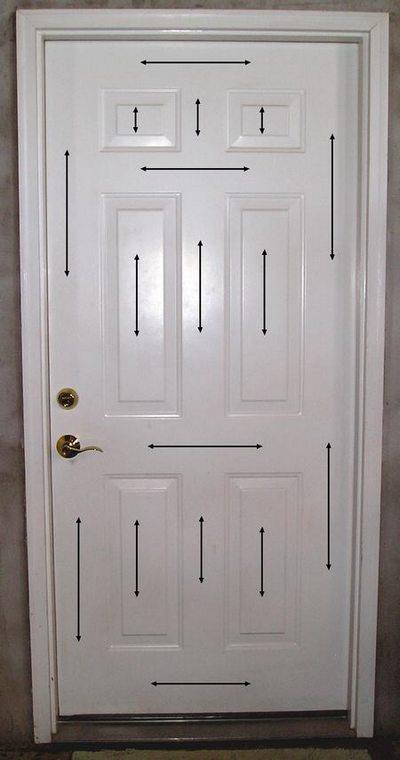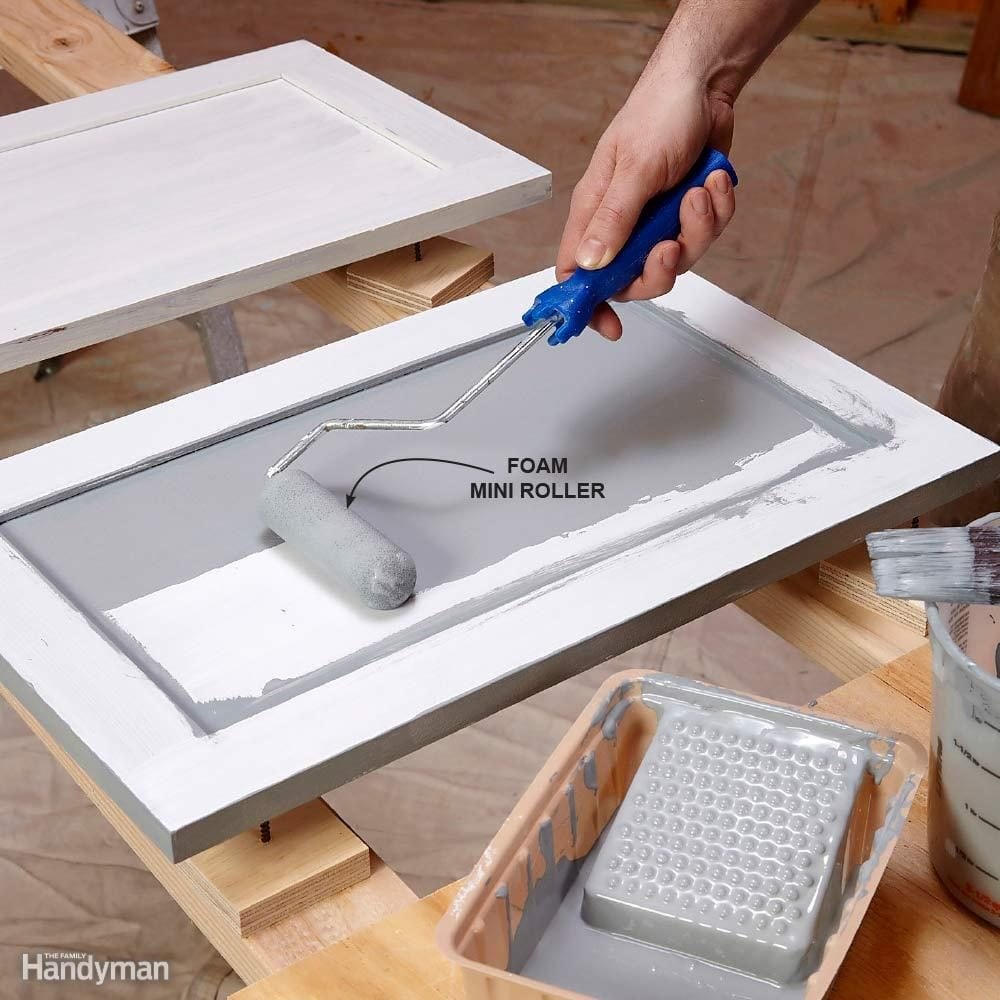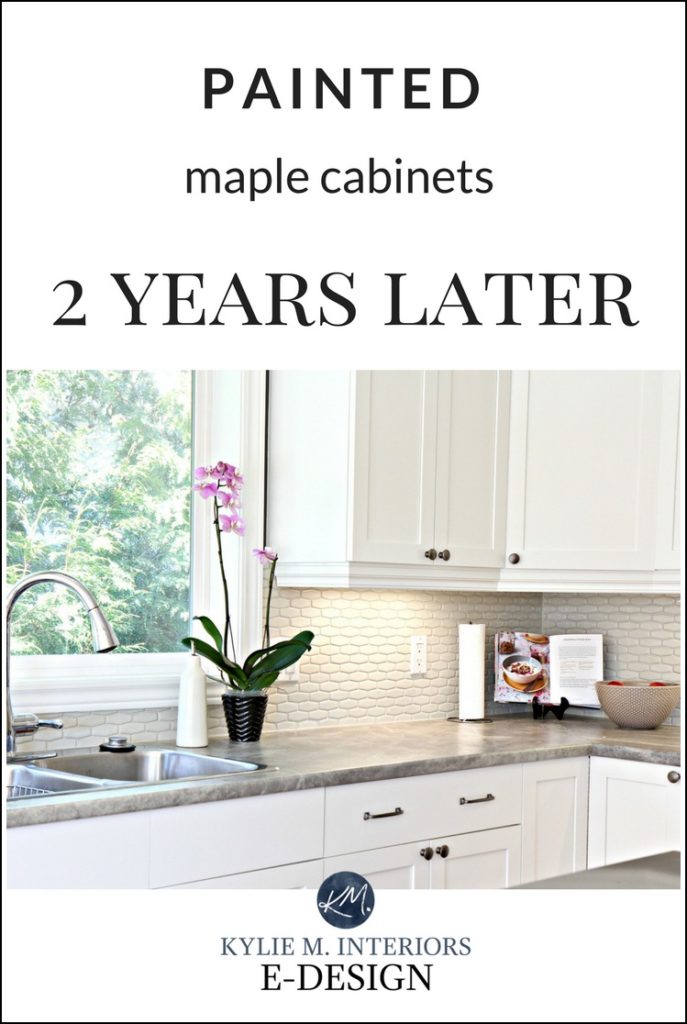
If you have a pneumatic air compressor, usage high-pressure air to blow the dust out of crevices or molding information. Wipe down the areas to be painted with a tack fabric to get any remaining sanding residue. Use an even coat of primer-sealer to all surfaces to ensure a well-bonded surface coat.

Another advantage to a primer-sealer is that it offers an excellent base for semigloss, water-based paint. High-gloss enamel paint was once the chosen surface for kitchen cabinets since it resists discolorations and water and is quickly cleaned up, but today's water-based finishes are easier to work with and provide a similarly long lasting surface (Cabinet Painting Contractors 28226).
This permits you to work rapidly in the less important locations, and allows you to see and correct any drips or smudges on the most visible locations - Cabinet Painting. Next, paint the cabinet doors and drawer fronts, along with any separate wood pieces or moldings. If these parts have raised or routed functions, be sure to stream the paint into crevices and corners, but don't permit it to build up in these spots.
Thin coats leave fewer noticeable brushstrokes and dry faster. Don't lay the surface on thickly and do not overwork the brush a lot of brush strokes will produce air bubbles in the finish, leaving bumps and pits when it dries - Cabinet Painting Contractors 28203. Permit the paint to dry for a minimum of four hours between coats.
Two coats of quality paint are typically enough, but you might want to include a third coat due to the fact that cooking area cabinets take lots of penalty from cooking heat and daily usage, and wood surfaces need all the defense they can get.
Getting The Painting Tips, How To And Faq's - Cabinet Painting 28217 Kelly-moore Paints To painted cabinets before and after Work
Wish to speed up the task? Pick a fast-drying guide for the first coat. Read the label for information on recoating time and to ensure the guide is suitable with the paint you're preparing to use (Cabinet Painting Contractors 28227). Pro Idea: Utilize an enamel underbody primer. Water-based paint has come a long way, and some premier acrylic alkyd hybrids rival oil-based paint.
Oil-based paint dries slowly and levels well. This gives you more working time and fewer brush marks. Likewise, when they're dry, oil-based guides like Benjamin Moore Fresh Start Enamel Underbody sand easily to offer an ideal base for your finish coat. Cabinet Painting 28213.
3 out of 5 Moderate Though it's simply paint, getting the brushwork right takes some time and patience. Drill/driver Paint scraper Putty knife Store vacuum with drywall-dust filter Random orbit sander Nylon-Polyester chisel-tip Paint brush - 2 1/2- Inch Safety safety glasses respirator fitted with natural vapor containers Chemical-resistant gloves If your kitchen cabinets are strong however dated and dark, a fresh coat of paint can go a long method toward transforming the area without draining your savings account - Cabinet Painters.
" You don't require to spray to get a smooth finish," says painting specialist John Dee, who has dealt with a number of This Old House TV projects. He frequently brush-paints cabinets anyway due to the fact that it gives him more control and prevents the risk of paint spray winding up where it's not desired.
But the outcome is a long lasting, glass-smooth surface that's the equivalent of anything from a spray gun. "You just need to use the best materials and make the effort to sand and do the brushwork right," Dee says. Continue reading for our tips for painting kitchen area cabinets. Prior to beginning a kitchen area paint job, empty the cabinets, clear off the counters, and eliminate freestanding appliances.
What Does How-to Tuesday: Create A Smooth Finish With Chalk Paint ... Do?

Tape rosin paper over the countertops and flooring, and tape plastic sheeting over the backsplash, windows, fixed devices, and interior entrances (to secure the rest of the house from dust and fumes). Mask off the wall around the cabinets. Finally, set up a worktable for painting doors, drawers, and shelves.
" Old cabinets are covered with everything from hand oils to oily smoke residue to petrified gravy," says Dee. "You have actually got to get all that off or the paint will not stick." Back out the hinge screws from the cabinet frame and get rid of the doors. Working systematically from delegated right, leading to bottom, label every one with a numbered piece of tape.
Reserve the shelf-hanging hardware. At your worktable, get rid of the pulls and hinges and conserve what's being recycled. On the doors, move the number from the tape to the exposed wood under one hinge. Cover it with fresh tape. Open the windows for ventilation and place on security equipment. Scrub down all of the face frames, doors, drawer fronts, and shelving with an abrasive pad dipped in liquid deglosser.